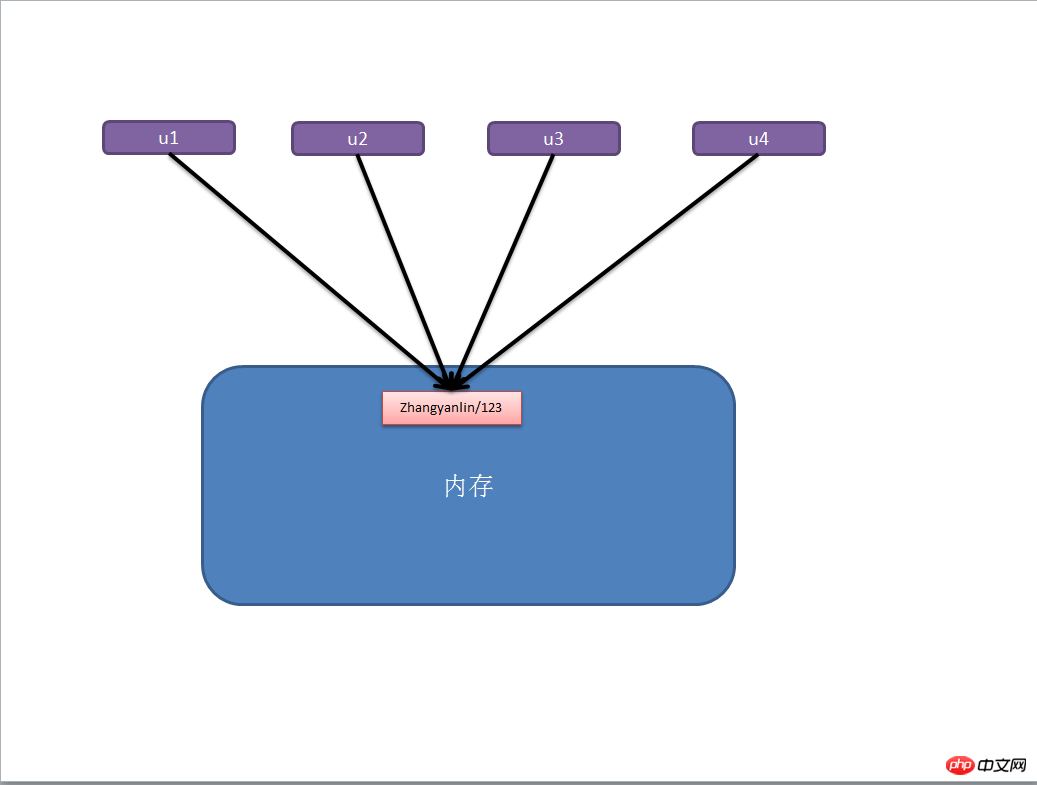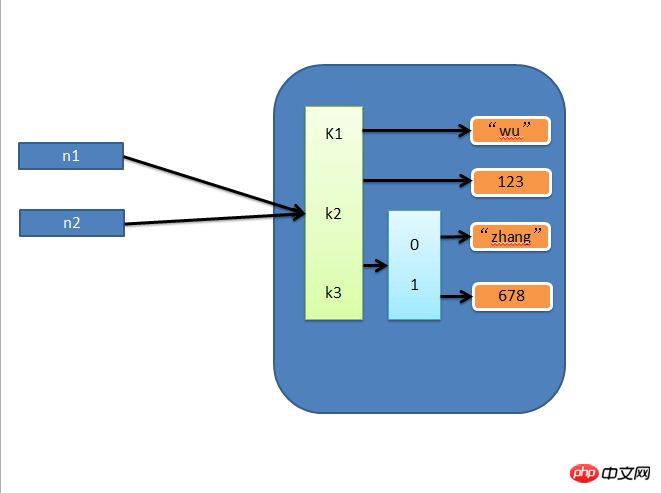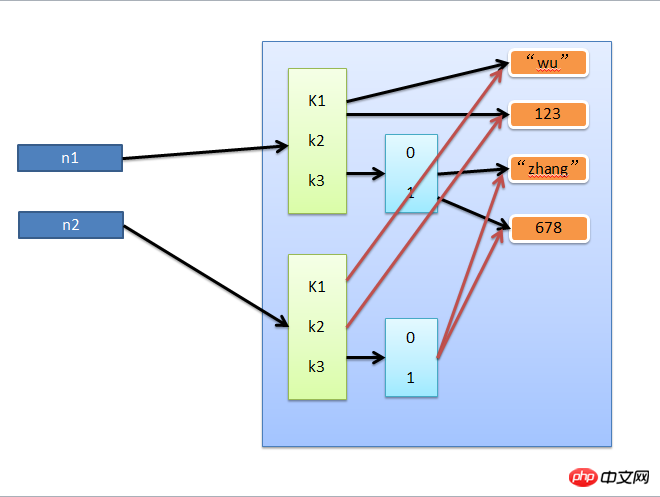Python常用知识点
1、Set基本数据类型
a、set集合,是一个无序且不重复的元素集合
class set(object):
"""
set() -> new empty set object
set(iterable) -> new set object
Build an unordered collection of unique elements.
"""
def add(self, *args, **kwargs): # real signature unknown
"""
Add an element to a set,添加元素
This has no effect if the element is already present.
"""
pass
def clear(self, *args, **kwargs): # real signature unknown
""" Remove all elements from this set. 清楚内容"""
pass
def copy(self, *args, **kwargs): # real signature unknown
""" Return a shallow copy of a set. 浅拷贝 """
pass
def difference(self, *args, **kwargs): # real signature unknown
"""
Return the difference of two or more sets as a new set. A中存在,B中不存在
(i.e. all elements that are in this set but not the others.)
"""
pass
def difference_update(self, *args, **kwargs): # real signature unknown
""" Remove all elements of another set from this set. 从当前集合中删除和B中相同的元素"""
pass
def discard(self, *args, **kwargs): # real signature unknown
"""
Remove an element from a set if it is a member.
If the element is not a member, do nothing. 移除指定元素,不存在不保错
"""
pass
def intersection(self, *args, **kwargs): # real signature unknown
"""
Return the intersection of two sets as a new set. 交集
(i.e. all elements that are in both sets.)
"""
pass
def intersection_update(self, *args, **kwargs): # real signature unknown
""" Update a set with the intersection of itself and another. 取交集并更更新到A中 """
pass
def isdisjoint(self, *args, **kwargs): # real signature unknown
""" Return True if two sets have a null intersection. 如果没有交集,返回True,否则返回False"""
pass
def issubset(self, *args, **kwargs): # real signature unknown
""" Report whether another set contains this set. 是否是子序列"""
pass
def issuperset(self, *args, **kwargs): # real signature unknown
""" Report whether this set contains another set. 是否是父序列"""
pass
def pop(self, *args, **kwargs): # real signature unknown
"""
Remove and return an arbitrary set element.
Raises KeyError if the set is empty. 移除元素
"""
pass
def remove(self, *args, **kwargs): # real signature unknown
"""
Remove an element from a set; it must be a member.
If the element is not a member, raise a KeyError. 移除指定元素,不存在保错
"""
pass
def symmetric_difference(self, *args, **kwargs): # real signature unknown
"""
Return the symmetric difference of two sets as a new set. 对称交集
(i.e. all elements that are in exactly one of the sets.)
"""
pass
def symmetric_difference_update(self, *args, **kwargs): # real signature unknown
""" Update a set with the symmetric difference of itself and another. 对称交集,并更新到a中 """
pass
def union(self, *args, **kwargs): # real signature unknown
"""
Return the union of sets as a new set. 并集
(i.e. all elements that are in either set.)
"""
pass
def update(self, *args, **kwargs): # real signature unknown
""" Update a set with the union of itself and others. 更新 """
passb、数据类型模块举例
se = {11,22,33,44,55}
be = {44,55,66,77,88}
# se.add(66)
# print(se) #添加元素,不能直接打印!
#
#
#
# se.clear()
# print(se) #清除se集合里面所有的值,不能清除单个
#
#
#
# ce=be.difference(se) #se中存在,be中不存在的值,必须赋值给一个新的变量
# print(ce)
#
#
# se.difference_update(be)
# print(se) #在se中删除和be相同的值,不能赋值给一个新的变量,先输入转换,然后打印,也不能直接打印!
# se.discard(11)
# print(se) #移除指定元素,移除不存在的时候,不会报错
# se.remove(11)
# print(se) #移除指定的元素,移除不存在的会报错
# se.pop()
# print(se) #移除随机的元素
#
#
# ret=se.pop()
# print(ret) #移除元素,并且可以把移除的元素赋值给另一个变量
# ce = se.intersection(be)
# print(ce) #取出两个集合的交集(相同的元素)
# se.intersection_update(be)
# print(se) #取出两个集合的交集,并更新到se集合中
# ret = se.isdisjoint(be)
# print(ret) #判断两个集合之间又没有交集,如果有交集返回False,没有返回True
# ret=se.issubset(be)
# print(ret) #判断se是否是be集合的子序列,如果是返回True,不是返回Flase
# ret = se.issuperset(be)
# print(ret) #判断se是不是be集合的父序列,如果是返回True,不是返回Flase
# ret=se.symmetric_difference(be)
# print(ret) #对称交集,取出除了不相同的元素
# se.symmetric_difference_update(be)
# print(se) #对称交集,取出不相同的元素并更新到se集合中
# ret = se.union(be)
# print(ret) #并集,把两个元素集合并在一个新的变量中2、深浅拷贝
a、数字和字符串
对于 数字 和 字符串 而言,赋值、浅拷贝和深拷贝无意义,因为其永远指向同一个内存地址。
import copy # ######### 数字、字符串 ######### n1 = 123 # n1 = "i am alex age 10" print(id(n1)) # ## 赋值 ## n2 = n1 print(id(n2)) # ## 浅拷贝 ## n2 = copy.copy(n1) print(id(n2)) # ## 深拷贝 ## n3 = copy.deepcopy(n1) print(id(n3))

b、其他基本数据类型
对于字典、元祖、列表 而言,进行赋值、浅拷贝和深拷贝时,其内存地址的变化是不同的。
1、赋值
赋值,只是创建一个变量,该变量指向原来内存地址,如:
n1 = {"k1": "zhangyanlin", "k2": 123, "k3": ["Aylin", 456]}
n2 = n1
2、浅拷贝
浅拷贝,在内存中只额外创建第一层数据
import copy
n1 = {"k1": "zhangyanlin", "k2": 123, "k3": ["aylin", 456]}
n3 = copy.copy(n1)3、深拷贝
深拷贝,在内存中将所有的数据重新创建一份(排除最后一层,即:python内部对字符串和数字的优化)

3、函数
函数式:将某功能代码封装到函数中,日后便无需重复编写,仅调用函数即可
面向对象:对函数进行分类和封装,让开发“更快更好更强...
.函数的定义主要有如下要点:
def:表示函数的关键字
函数名:函数的名称,日后根据函数名调用函数
函数体:函数中进行一系列的逻辑计算,如:发送邮件、计算出 [11,22,38,888,2]中的最大数等...
参数:为函数体提供数据
返回值:当函数执行完毕后,可以给调用者返回数据。
1、返回值
函数是一个功能块,该功能到底执行成功与否,需要通过返回值来告知调用者。
以上要点中,比较重要有参数和返回值:
def 发送短信():
发送短信的代码...
if 发送成功:
return True
else:
return False
while True:
# 每次执行发送短信函数,都会将返回值自动赋值给result
# 之后,可以根据result来写日志,或重发等操作
result = 发送短信()
if result == False:
短信发送失败...函数的有三中不同的参数:
普通参数
# ######### 定义函数 #########
# name 叫做函数func的形式参数,简称:形参
def func(name):
print name
# ######### 执行函数 #########
# 'zhangyanlin' 叫做函数func的实际参数,简称:实参
func('zhangyanlin')
默认参数
def func(name, age = 18):
print "%s:%s" %(name,age)
# 指定参数
func('zhangyanlin', 19)
# 使用默认参数
func('nick')
注:默认参数需要放在参数列表最后
动态参数
def func(*args): print args # 执行方式一 func(11,33,4,4454,5) # 执行方式二 li = [11,2,2,3,3,4,54] func(*li)
def func(**kwargs):
print args
# 执行方式一
func(name='wupeiqi',age=18)
# 执行方式二
li = {'name':'wupeiqi', age:18, 'gender':'male'}
func(**li)def func(*args, **kwargs): print args print kwargs
邮件实例:
def email(p,j,k):
import smtplib
from email.mime.text import MIMEText
from email.utils import formataddr
set = True
try:
msg = MIMEText('j', 'plain', 'utf-8') #j 邮件内容
msg['From'] = formataddr(["武沛齐",'wptawy@126.com'])
msg['To'] = formataddr(["走人",'424662508@qq.com'])
msg['Subject'] = "k" #k主题
server = smtplib.SMTP("smtp.126.com", 25)
server.login("wptawy@126.com", "WW.3945.59")
server.sendmail('wptawy@126.com', [p], msg.as_string())
server.quit()
except:
set = False
return True
formmail = input("请你输入收件人邮箱:")
zhuti = input("请您输入邮件主题:")
neirong = input("请您输入邮件内容:")
aa=email(formmail,neirong,zhuti)
if aa:
print("邮件发送成功!")
else:
print("邮件发送失败!")更多 Python常用知识点相关文章请关注PHP中文网!

热AI工具

Undresser.AI Undress
人工智能驱动的应用程序,用于创建逼真的裸体照片

AI Clothes Remover
用于从照片中去除衣服的在线人工智能工具。

Undress AI Tool
免费脱衣服图片

Clothoff.io
AI脱衣机

AI Hentai Generator
免费生成ai无尽的。

热门文章

热工具

记事本++7.3.1
好用且免费的代码编辑器

SublimeText3汉化版
中文版,非常好用

禅工作室 13.0.1
功能强大的PHP集成开发环境

Dreamweaver CS6
视觉化网页开发工具

SublimeText3 Mac版
神级代码编辑软件(SublimeText3)
 如何使用Python查找文本文件的ZIPF分布
Mar 05, 2025 am 09:58 AM
如何使用Python查找文本文件的ZIPF分布
Mar 05, 2025 am 09:58 AM
本教程演示如何使用Python处理Zipf定律这一统计概念,并展示Python在处理该定律时读取和排序大型文本文件的效率。 您可能想知道Zipf分布这个术语是什么意思。要理解这个术语,我们首先需要定义Zipf定律。别担心,我会尽量简化说明。 Zipf定律 Zipf定律简单来说就是:在一个大型自然语言语料库中,最频繁出现的词的出现频率大约是第二频繁词的两倍,是第三频繁词的三倍,是第四频繁词的四倍,以此类推。 让我们来看一个例子。如果您查看美国英语的Brown语料库,您会注意到最频繁出现的词是“th
 我如何使用美丽的汤来解析HTML?
Mar 10, 2025 pm 06:54 PM
我如何使用美丽的汤来解析HTML?
Mar 10, 2025 pm 06:54 PM
本文解释了如何使用美丽的汤库来解析html。 它详细介绍了常见方法,例如find(),find_all(),select()和get_text(),以用于数据提取,处理不同的HTML结构和错误以及替代方案(SEL)
 python中的图像过滤
Mar 03, 2025 am 09:44 AM
python中的图像过滤
Mar 03, 2025 am 09:44 AM
处理嘈杂的图像是一个常见的问题,尤其是手机或低分辨率摄像头照片。 本教程使用OpenCV探索Python中的图像过滤技术来解决此问题。 图像过滤:功能强大的工具 图像过滤器
 如何使用Python使用PDF文档
Mar 02, 2025 am 09:54 AM
如何使用Python使用PDF文档
Mar 02, 2025 am 09:54 AM
PDF 文件因其跨平台兼容性而广受欢迎,内容和布局在不同操作系统、阅读设备和软件上保持一致。然而,与 Python 处理纯文本文件不同,PDF 文件是二进制文件,结构更复杂,包含字体、颜色和图像等元素。 幸运的是,借助 Python 的外部模块,处理 PDF 文件并非难事。本文将使用 PyPDF2 模块演示如何打开 PDF 文件、打印页面和提取文本。关于 PDF 文件的创建和编辑,请参考我的另一篇教程。 准备工作 核心在于使用外部模块 PyPDF2。首先,使用 pip 安装它: pip 是 P
 如何在django应用程序中使用redis缓存
Mar 02, 2025 am 10:10 AM
如何在django应用程序中使用redis缓存
Mar 02, 2025 am 10:10 AM
本教程演示了如何利用Redis缓存以提高Python应用程序的性能,特别是在Django框架内。 我们将介绍REDIS安装,Django配置和性能比较,以突出显示BENE
 如何使用TensorFlow或Pytorch进行深度学习?
Mar 10, 2025 pm 06:52 PM
如何使用TensorFlow或Pytorch进行深度学习?
Mar 10, 2025 pm 06:52 PM
本文比较了Tensorflow和Pytorch的深度学习。 它详细介绍了所涉及的步骤:数据准备,模型构建,培训,评估和部署。 框架之间的关键差异,特别是关于计算刻度的
 如何在Python中实现自己的数据结构
Mar 03, 2025 am 09:28 AM
如何在Python中实现自己的数据结构
Mar 03, 2025 am 09:28 AM
本教程演示了在Python 3中创建自定义管道数据结构,利用类和操作员超载以增强功能。 管道的灵活性在于它能够将一系列函数应用于数据集的能力,GE
 Python中的平行和并发编程简介
Mar 03, 2025 am 10:32 AM
Python中的平行和并发编程简介
Mar 03, 2025 am 10:32 AM
Python是数据科学和处理的最爱,为高性能计算提供了丰富的生态系统。但是,Python中的并行编程提出了独特的挑战。本教程探讨了这些挑战,重点是全球解释






